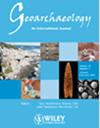Landscape Archaeology of the Chuchuwayha Sacred Site (British Colombia, Canada)
Abstract
New research is being conducted at the Chuchuwayha sacred site (British Columbia, Canada) at the request of the Upper Similkameen Indian Band, who want to pass on the site's history to future generations. The project's aims were to determine when this site in the glacial Similkameen Valley became accessible to human communities, to reconstruct the formation of the surrounding landscape, and to describe the rock shelter's evolution during the period of human frequentation (rock art). To this end, we combined geomorphological, archaeometric, and geochemical (cosmogenic dating) data to construct a robust chronological framework for the site's evolution and human occupations. Results showed that the Similkameen Valley became ice-free 18,000 years ago, that the site's morphology was shaped by postglacial processes, and that its general topography had formed around 7000 years ago. The site's morphology—a rock shelter behind a mound of rockfall boulders—created a trap for eolian and autochthonous sediments, which have preserved a record of human occupations. Our multidisciplinary approach also enabled us to determine age ranges for the shelter's paintings, to draw up a new time frame for human occupations of the site, which lies on a traditional Syilx trail, and to relate these occupations to changes in the surrounding landscape.

 求助内容:
求助内容: 应助结果提醒方式:
应助结果提醒方式:


